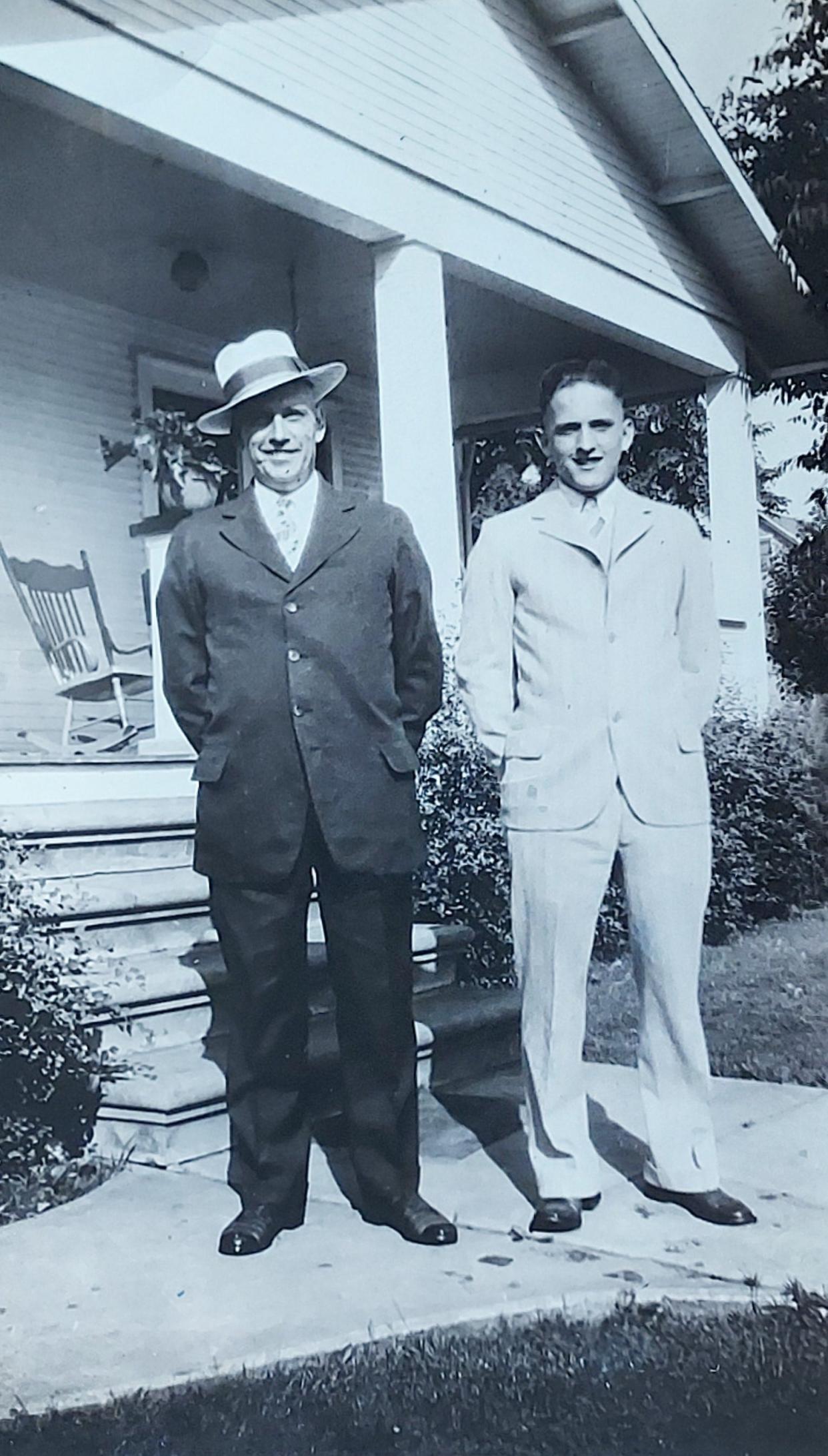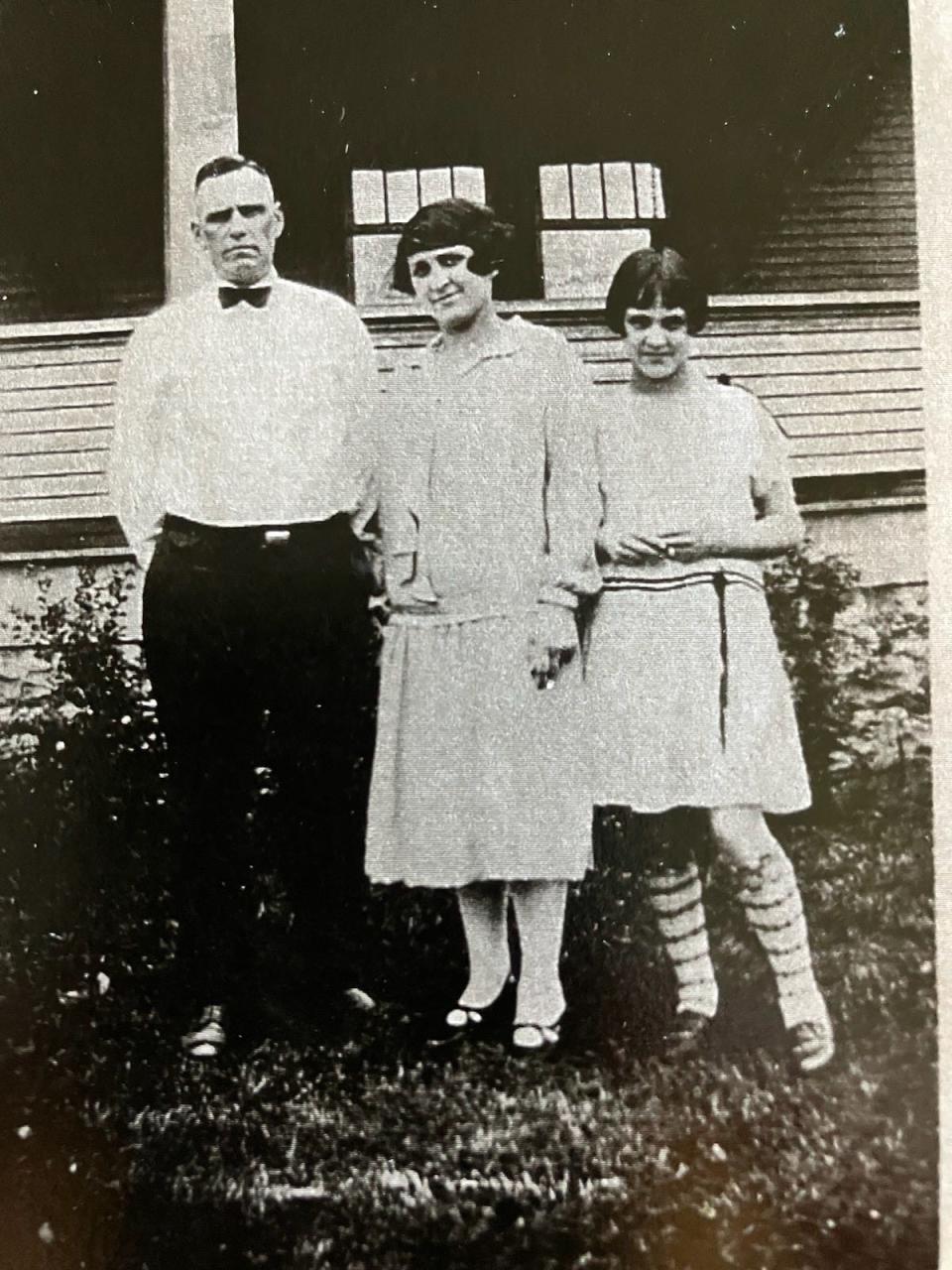Hooked on History: Cause of Ernest Knapp's death remains a mystery after 94 years

On the afternoon of April 2, 1929, Ernest Knapp, 42, of 80 S. Johnson Ave., Dover, left for his job at the American Sheet & Tin Plate Co. plant on South Tuscarawas Avenue in Dover. He was never seen alive again.
That evening, mill employees called Knapp's wife, Sadie, to ask why he had not reported for work. A search for the missing millworker began immediately, with Dover police dragging the Tuscarawas River for three hours. He had been last seen at the Home restaurant at the corner of Front Street and Tuscarawas Avenue in Dover.
More Dover history: Hooked on History: St. Joseph Church serves diverse parish in Dover for 175 years
The following day, Boy Scouts from Dover and New Philadelphia conducted a search, and radio stations around Ohio broadcast Knapp's description. According to newspaper accounts, Ernest Knapp was 5 feet, 8 inches tall with dark hair, partly gray, and a scar on his right cheek. He was missing his little finger on his left hand and his index finger on his right hand.
The initial thought was the Knapp had harmed himself. He had suffered from heart disease for five years. In addition, his daughters Dorothy, 16, and Wilma, 14, had been badly injured in an automobile accident in September 1928. Knapp had been unable to get any insurance on the accident.
Sightings throughout Tuscarawas County
His disappearance was front page news in the Dover-New Philadelphia area. Reports of alleged sightings of Knapp came in from Tuscarawas, Gnadenhutten, Uhrichsville, Winfield, Strasburg and Magnolia. On April 4, Sadie Knapp and her two daughters made a rushed trip to Sugarcreek where her husband had reportedly been found. It wasn't Ernest.
Meanwhile, police continued dragging the Tuscarawas River for his body, using dynamite in the hopes of dislodging it. "A large crowd watched operations and small boys fought for the larger of the fish killed by the blasts," the Dover Daily Reporter said.
Out of desperation, Sadie Knapp sought the assistance of fortune tellers to find her husband. On April 4, a canvas glove thought to belong to Ernest Knapp was found near the Tuscarawas Avenue bridge in Dover, supposedly at a spot where a Canton fortune teller had told Sadie that it would be found.
Tip from an Alliance fortune teller
On April 6, Sadie and her daughters traveled to Alliance to consult a second fortune teller. The fortune teller told them that if a search was started after daybreak on the following day, it would be successful. If a daylight search was made, searchers would overlook Knapp.
So on April 7, a Sunday, a band of men, led by Dover traffic officer Frank H. Javens, scoured the banks of the Tuscarawas River from Dover to Blicktown (now the I-77 interchange in New Philadelphia) and Sugar Creek from its mouth to Schneiders Crossing Road.
"The searchers were seeking the place described by the fortune teller where she said Knapp, unconscious, would be lying in underbrush not more than a half mile from his home," the New Philadelphia Daily Times reported.
Nothing was found.
As the search continued, the Dover Rotary Club and the Dover Kiwanis Club donated $100 as a reward for whoever found Knapp's body. At the same time, the Rev. Paul F. Ebert, pastor of Grace Lutheran Church in Dover, raised $64 to go to Sadie Knapp and her children.
Truck driver spots body
At 12:20 p.m. on April 10, John B. Rankin of New Philadelphia, an employee of the Fred Rufenacht Coal Co., was driving his coal truck on the South Broadway bridge in New Philadelphia when he spotted Knapp's body in the Tuscarawas River, 400 feet southeast of the Graff Co. slaughterhouse. The body had become stranded in shallow water near the center of the river.
He summoned help, and two men, including New Philadelphia Patrolman Alex McIntosh, went out in a boat to retrieve the body. The two men were unable to dislodge it. "Rankin was obliged to wade into the water to free the body and drag it to shore," the Daily Times said.
Rankin donated the $100 reward for finding the body to the Knapp family.
Tuscarawas County Coroner J. Floyd Lewis conducted an autopsy that evening. He ruled that Knapp died of causes unknown, likely due to exposure or sudden convulsive death on or before striking the water.
"The lungs contained no water, and the mystery of the case was further intensified by the fact that the hair at the back of the head was smeared with coal tar," the Daily Reporter said. "The fact that he apparently did not drown leaves the matter open to wide speculation."
'His model home life'
Knapp's funeral was held on April 12 at Grace Lutheran Church. A large crowd nearly filled the building for the service.
"Rev. Ebert paid a tribute to Knapp as a father and husband, pointed out his model home life and admonished his audience against hasty judgment on the fate of men who disappear from the walks of life," the Daily Times reported. "He recalled the public's unwarranted belief that Knapp had ended his life and declared that Knapp's death is a mystery which may never be solved.
"'People should not pass judgment when they do not know,' Rev. Ebert declared. 'All who have said that Knapp committed suicide have wronged his memory and his family.'"

The Knapp family was left destitute by Ernest's death. Sadie Knapp supported her children by taking in and doing the laundry from private families, according to her granddaughter, Peggy Robb. Sadie eventually remarried, marrying Herman Rufener in 1937. She died Nov. 28, 1979, at age 85.
Jon Baker is a reporter for The Times-Reporter and can be reached at jon.baker@timesreporter.com.
This article originally appeared on The Times-Reporter: History: Cause of Ernest Knapp's death remains mystery after 94 years

